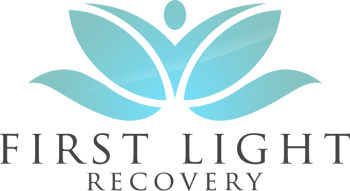Sadness and depression might seem similar, but they’re quite distinct. Sadness is a temporary emotion triggered by events like loss or disappointment. You might feel down, but it usually passes with time or supportive activities. Depression, however, is persistent and more severe. It seeps into your everyday life, affecting your appetite, sleep, and ability to enjoy things you once loved. It can last for weeks or even longer and may require professional intervention. Understanding these differences is vital for recognizing when you or someone else needs help. Discover more about the signs to watch for and ways to cope effectively.
Key Takeaways
- Sadness is a temporary emotional response, while depression is a persistent and severe mental health condition.
- Depression disrupts daily life and functions, unlike sadness, which is a normal transient emotion.
- Depression involves persistent feelings of hopelessness, whereas sadness usually resolves with time or support.
- Physical changes like appetite and sleep disturbances are more common in depression than in sadness.
- Professional help is often required for depression, while sadness can be alleviated through supportive social interactions and self-care.
Understanding Emotions
Why do we feel such a wide range of emotions? Emotions are your body’s complex responses to internal and external stimuli, allowing you to navigate the world around you. They serve as a communication tool and a driving force behind decisions, actions, and social interactions.
Emotions can be triggered by experiences, thoughts, or memories and are influenced by both your biology and environment. They’re essential for survival, ensuring you react appropriately to threats, forge social bonds, and seek pleasure or avoid discomfort.
When you understand why emotions arise, you can better manage them. Recognizing your emotional triggers helps you gain insight into your personal experiences and reactions. It fosters emotional intelligence, enabling you to cope with stress, maintain healthier relationships, and make more informed decisions.
By interpreting emotions effectively, you achieve a balance between feeling and thinking.
Understanding emotions also means acknowledging their complexity. Different emotions can overlap or mask others, making it vital to identify what you’re genuinely feeling.
This awareness aids in distinguishing between transient feelings, like sadness, and more persistent conditions, like depression. By cultivating this understanding, you empower yourself to navigate your emotional landscape more effectively and empathetically.
Defining Sadness
Sadness, one of the most common human emotions, is a natural response to loss, disappointment, or distress. When you experience sadness, it’s often a reflection of specific events or situations that trigger these feelings.
This emotional state can arise from minor setbacks, like losing a game, to more significant matters, such as the passing of a loved one. It’s crucial to acknowledge that sadness is a temporary and normal emotion that all humans experience at some point in their lives.
When you’re sad, you might feel tearful, run-down, or overwhelmed. It could lead to physical reactions, such as fatigue or a lack of enthusiasm for activities you typically enjoy.
But despite these feelings, sadness doesn’t necessarily consume your life or hinder your ability to function in daily tasks. Lightening the feelings of sadness can come naturally over time, especially with support from friends, and family or engaging in enjoyable activities.
Defining Depression
When you’re trying to understand depression, it’s important to recognize its characteristics: persistent sadness, loss of interest, and fatigue that doesn’t seem to go away.
Unlike sadness, which is typically temporary, depression is a more severe and enduring condition that can disrupt your daily life.
Be aware of warning signs like changes in appetite, sleep patterns, and concentration, which might indicate the need for professional help.
Characteristics of Depression
Depression is a complex mental health disorder characterized by persistent feelings of deep sadness, hopelessness, and a lack of interest or pleasure in activities that once brought joy. It’s more than just feeling down or having a bad day—it’s a condition that can substantially impact your daily life.
When you’re experiencing depression, it’s hard to focus, remember details, or make decisions. This mental fog can make simple tasks feel overwhelming, leaving you constantly exhausted, even after adequate rest.
Physical symptoms often accompany emotional ones. You might experience changes in appetite—either eating too much or too little—and a noticeable fluctuation in weight. Sleep patterns can also be affected, leading to insomnia or excessive sleeping.
Whilst you mightn’t see a connection initially, aches and pains without a clear physical cause can sometimes be an indicator of depression.
Social withdrawal is another characteristic. You may find yourself avoiding friends and family, preferring isolation. While in this state, irritability or frustration may appear over small issues, further straining relationships.
Recognizing these characteristics early can help you seek the right support and treatment, moving towards a brighter mental state. If you think you have these symptoms, take this helpful depression self-test.
Depression Warning Signs
Recognizing the warning signs of depression can be a critical step toward seeking help and improving your mental health. You might notice persistent feelings of sadness or hopelessness, but depression often goes beyond that.
It can manifest as a loss of interest in activities you once enjoyed, changes in appetite or weight, and difficulty sleeping or oversleeping. You may also experience fatigue or a lack of energy, even after a full night’s rest.
Pay attention to how you feel mentally and physically. Difficulty concentrating, making decisions, or recalling information can also signal depression. A growing sense of worthlessness or guilt that seems overwhelming might accompany these changes.
You should also be mindful of unexplained physical problems, like headaches or stomach issues, which might be linked to your mental state.
Depression’s warning signs are unique to each person. If you notice these signs persisting for more than two weeks, it’s essential to seek help. A supportive facility like First Light Recovery in Orange County, CA, offers 24/7 inpatient mental health treatment.
Don’t hesitate to call 949-326-3658 to take the next step toward recovery. Remember, seeking help is a sign of strength.
Common Triggers
You can better understand the difference between depression and sadness by recognizing common triggers that set them apart.
Emotional triggers, like unresolved grief or chronic stress, can exacerbate feelings of depression, turning temporary sadness into a prolonged state.
Environmental factors, such as living conditions or social isolation, can also play a significant role in influencing how you experience and manage these emotions.
Identifying Emotional Triggers
At times, emotional triggers can feel overwhelming, but understanding them empowers you to manage your mental health more effectively. Emotional triggers are specific situations, people, or events that provoke a significant emotional response. When you’re aware of these triggers, you can anticipate and better manage your reactions.
Common emotional triggers vary for each person but often include relationship conflicts, work stress, or trauma reminders. You might find that certain words or actions tap into deep-rooted feelings linked to past experiences.
Identifying these moments allows you to create strategies to cope when they arise. Whether it’s through breathing exercises, journaling, or talking to a therapist, having a plan in place can reduce the emotional impact.
Another common trigger is comparison, especially in the age of social media. Seeing others’ curated lives may lead to feelings of inadequacy or sadness. Recognizing this as a trigger helps you limit exposure and focus on self-validation.
Understanding that these triggers are part of the human experience and not a personal failure goes a long way in building resilience. By acknowledging and addressing your triggers, you’re making a conscious effort towards a healthier mental state.
Environmental Impact Factors
Environmental factors can substantially affect your mental health, acting as common triggers that influence your emotional well-being. The place where you live, the people you interact with, and daily stressors all contribute to your mental state.
For instance, a chaotic home environment or constant exposure to negativity can make you feel anxious or depressed. Even seemingly minor factors, like weather changes or lack of exposure to sunlight, can trigger shifts in mood. Recognizing these environmental influences allows you to take steps toward creating a more supportive atmosphere.
Additionally, your work environment can markedly impact your mental health. Work stress, tight deadlines, or conflict with colleagues can create a breeding ground for anxiety and depression. It’s crucial to identify and address these stressors early on.
You might consider setting boundaries or finding new coping strategies to alleviate this pressure.
On the flip side, supportive social networks and positive relationships can be powerful buffers against mental health challenges. Engaging with uplifting individuals and environments bolsters resilience. Taking control of your surroundings, where possible, not only helps discern the difference between sadness and depression but also empowers you to build a healthier mental landscape.
Behavioral Signs
Understanding the behavioral signs of depression versus sadness is key to identifying the right treatment approach. Depression and sadness may seem similar, but they manifest differently in daily life.
If you’re dealing with sadness, you might feel down but still participate in activities and maintain an interest in hobbies. Depression, however, often leads to noticeable behavioral changes that extend beyond your emotional state.
In the case of depression, watch for these behavioral signs:
- Withdrawal from social activities: You might find yourself avoiding gatherings or canceling plans with friends.
- Decreased performance at work or school: Tasks may feel overwhelming, leading to a decline in productivity or grades.
- Neglecting personal care: Simple routines like showering or brushing your teeth might become neglected.
- Lack of motivation: Even activities you previously enjoyed might seem pointless or exhausting.
- Changes in appetite: You may eat more or less than usual, affecting your overall nutritional intake.
These changes aren’t just temporary reactions to life’s challenges. Recognizing these signs can help you seek appropriate support.
If you or someone you know is displaying these behaviors, consider reaching out for professional help to explore the best treatment options available.
Emotional Symptoms
Recognizing emotional symptoms is essential in distinguishing between depression and sadness. While sadness is a natural human emotion often triggered by specific events, depression involves sustained feelings of intense hopelessness and despair.
When you’re sad, you may cry, feel down for a short time, or struggle with temporary tasks, but these feelings generally pass as your situation changes. With depression, the emotional heaviness persists without clear reason and doesn’t easily lift, even with positive changes.
In depression, emotional symptoms can impact every aspect of your life. You might experience overwhelming guilt, intense sadness, or feel worthless. Often, there’s a profound sense of emptiness or apathy that makes joy seem distant and unattainable.
Even activities you once loved may bring little to no satisfaction. Unlike sadness, which is usually processed over days or weeks, depression lingers for months or even years, potentially disrupting relationships and work.
Additionally, depression can lead to irritability or anger. You might find yourself snapping at loved ones or feeling disproportionately upset over minor issues. Recognizing these emotional patterns early can help you understand whether you’re dealing with temporary sadness or a more serious depressive state.
Seeking Treatment
Identifying the persistent emotional symptoms that suggest depression rather than mere sadness can guide you toward the next critical step: seeking depression treatment. Recognizing the need for specialized care can be a turning point. You’re not alone, and there are resources available to support you.
Choosing to seek treatment is a courageous step. You might explore different forms of therapy or seek out locations like First Light Recovery. Located in Orange County, CA, we offer a highly rated, compassionate approach to mental health recovery with round-the-clock professional care.
Here’s what you might consider:
- Understand your needs: Different conditions require tailored approaches.
- Research your options: Look into programs like First Light Recovery’s CARF-accredited facility known for a holistic approach.
- Consult professionals: Talk to a mental health professional about your symptoms and the best form of treatment.
- Consider residential care: Could an immersive setting aid your recovery process?
- Evaluate support networks: Verify that you have friends, family, or support groups to lean on during your treatment.
Long-term Impact
Over time, seeking treatment for mental health challenges can fundamentally alter your life’s trajectory, leading to lasting positive changes. By addressing depression through professional intervention, you initiate a path toward understanding and managing your mental health effectively.
Overcoming depression isn’t just about escaping its grip; it’s about learning how to thrive despite the challenges.
This mindset shift fosters resilience, allowing you to face future adversities with newfound confidence. The tools you gain enable you to identify potential triggers and patterns, giving you better control over your emotional responses. Traversing your emotional landscape can feel like downloading updates on an old computer—frustrating but essential. Sadness is a natural part of life, often temporary and linked to specific events. Depression, on the other hand, is more insidious, impacting daily life and requiring professional help. Recognizing the difference is vital for your mental health, helping you to seek the right support. Stay attuned to how you’re feeling, and don’t hesitate to contact First Light Recovery for help.




